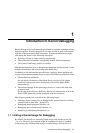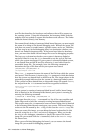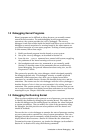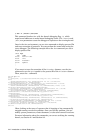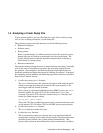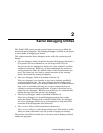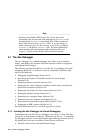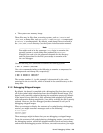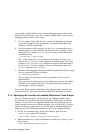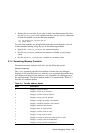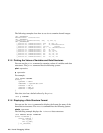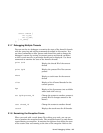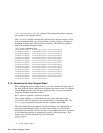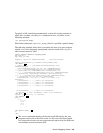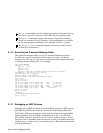
• The system core memory image
These files may be files from a running system, such as /vmunix and
/dev/mem, or dump files, such as vmunix.n and vmzcore.n (compressed)
or vmcore.n (uncompressed). By default, crash dump files are created in
the /var/adm/crash directory (see the System Administration manual).
______________________ Note _______________________
You might need to be the superuser (root login) to examine the
running system or crash dump files produced by savecore.
Whether you need to be the superuser depends on the directory
and file protections for the files you attempt to examine with
the dbx debugger.
Use the following dbx command to examine the running system:
# dbx −k /vmunix /dev/mem
Use a dbx command similar to the following to examine a compressed or
uncompressed crash dump file, respectively:
# dbx −k vmunix.1 vmzcore.1
# dbx −k vmunix.1 vmcore.1
The version number (.1, in this example) is determined by the value
contained in the bounds file, which is located in the same directory as the
dump files.
2.1.2 Debugging Stripped Images
By default, the kernel is compiled with a debugging flag that does not strip
all of the symbol table information from the executable kernel image. The
kernel is also partially optimized during the compilation process by default.
If the kernel or any other file is fully optimized and stripped of all symbol
table information during compilation, your ability to debug the file is greatly
reduced. However, the dbx debugger provides commands to aid you in
debugging stripped images.
When you attempt to display the contents of a symbol during a debugging
session, you might encounter messages such as the following:
No local symbols.
Undefined symbol.
Inactive symbol.
These messages might indicate that you are debugging a stripped image.
To see the contents of all symbols during a debugging session, you can leave
the debugging session, rebuild all stripped modules (but do not strip them),
and reenter the debugging session. However, on certain occasions, you might
Kernel Debugging Utilities 2–3



